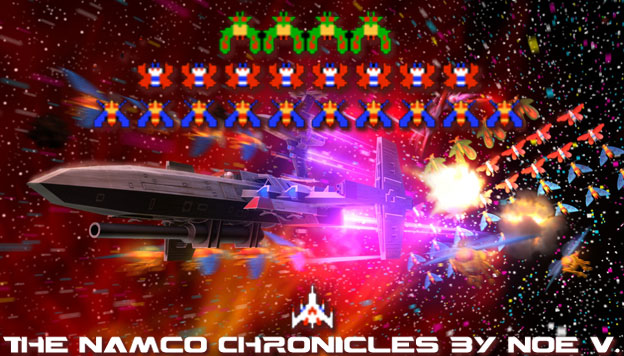
I had mentioned in previous entries of this blog that the Ridge Racer cars reflected the best elements of vehicle designs from the past century. The cars in the game were inspired by production and concept automobiles. In many cases they were designed from the ground up by the people working at Namco. Since many of the early developers on the series had experience designing space fighters it stood to reason that a few of the concept cars featured in the game would be rooted in science fiction. One of the manufactures featured in the title was a Japanese company called Terrazi. Of every manufacturer featured in the game none had cars as dynamic as those from Terrazi. Two of the boldest designs looked less like cars and more like missiles. The Terrazi Terrajin, from Ridge Racer 7 and the Terrazi Utopia from Ridge Racer Type 4 knew no peer. Suffice to say that even the Angel 0 and Devil 13 looked almost plain by comparison. To be fair there were some other "cars" that floated above the ground including the Assoluto Vulcano and Assoluto Pronzione but for right now I want to highlight the ones that bridged racing technology with flight technology.
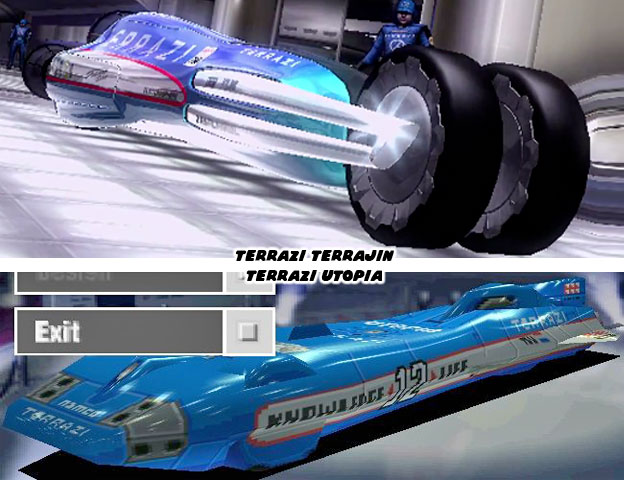
Rocket cars were not a new idea. Mankind has always wanted to push the limits of speed. Early hot rodders strapped whatever they could to the engine to make them faster. Superchargers, turbochargers helped greatly and different fuel mixtures including alcohol, methanol and nitrous oxide pushed the barriers of performance and safety. When aerodynamics became a limiting factor on traditional car shapes then speed enthusiasts began creating their own frames. They hammered out bullet shaped bodies from aircraft aluminum to squeeze every little bit of speed out of an engine that they could. These enthusiasts, sometimes called speed junkies, would look for the longest, flattest places on Earth to test out their creations. None became more famous than the salt flats at Bonneville in Utah. Every year people would come in from all over the world to try and set a land speed record. Some of those pioneers were injured in the process and a few even died from their pursuits. The Terrajin and Utopia were a nod to
the rocket sleds that ignited the imagination of car enthusiasts everywhere.
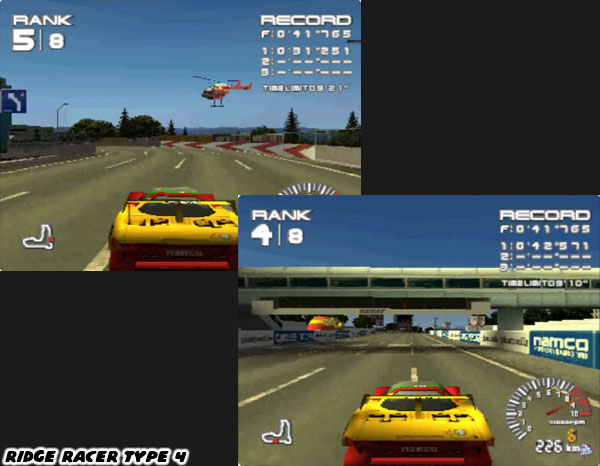
What made the land missiles in the Ridge Racer series unique was that they weren't exactly focused on land speed records. Despite their size and shape they were actually capable of turning on a dime. The excess horsepower each ride possessed was so that they could destroy the competition on the straightaway and use their momentum to slide around turns without losing hardly any speed. The power plants inside of the vehicles were experimental. Only the engineers at Terrazi knew their full specs and they were not always at liberty to say what they were. Most gamers could gather that the Utopia was a jet-powered car based on the exhaust vent at the rear. The Terrajin was something else entirely. The car seemed to have some sort of hybrid motor system. The exhaust cones at the rear of the car would only ignite while under full nitro boost. In fact additional ports would open up on the sides of the car and the roof to allow additional exhaust to escape. These cones did not give off fire or smoke. Whatever fuel system the car employed was not a traditional fossil, rocket or even jet fuel.
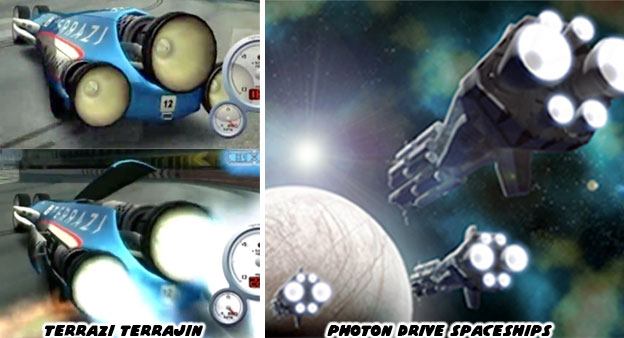
The engineers at Terrazi had introduced the first fully functional space propulsion system and wanted the world to take notice. The name Terrajin actually had symbolism behind it. Terra was Latin for Earth but Jin had multiple meanings in Japanese, the two most common being God or Person. The Terrajin was a God among terrestrial cars. The designers shoehorned the "Photon Drive" technology into a headline grabbing ride. Featuring a Photon Engine in a Ridge Racer duel class car was not an accident. The Terrajin was a prototype, built on a smaller scale than the space ships that would eventually take humanity across the stars. In UGSF canon Photon Drives were in the testing phases on actual space ships by the year 2050. This was 10 years after the events in Ace Combat 3, the series that was connected to Ridge Racer. The high-tech engines were used as primary propulsion systems for drilling vessels sent to far off planets between the years 2100 to 2200. Namco fans were getting the first glimpse of the technology that would eventually launch Coleoptera Fighters in Galaga a few centuries later.
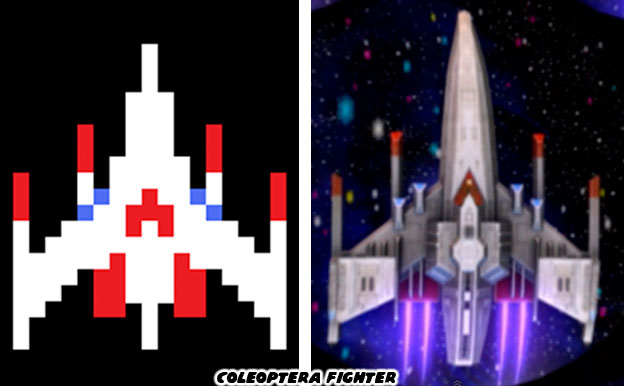
This was not the only revolutionary technology that the series would introduce into Namco canon. A rival Japanese company to Terrazi was Kamata. In Ridge Racer Vita the company unveiled the Kamata SYNCi. This car was the bridge to an entirely new form of racing. The SYNCi was a super car that featured a hybrid engine on top of other cutting-edge technologies. It was designed to be the flagship for all new Kamata models. They chose the name SYNCi to take a shot right at Terrazi. The nickname of the SYNCi translated to “a god container” in Japanese. Not in the sense that it was a car that could trap the Terrajin, but rather that it was a vessel for the soul or spirit. The biggest feature of the car was an electronic brain or “SYNC-I system” that monitored the driver's stress and synchronized with their emotions. The car was not predicting a stroke or heart attack but rather engineered to take care of its driver. With man and machine synchronized it could help find the perfect line through a turn with minimal input.
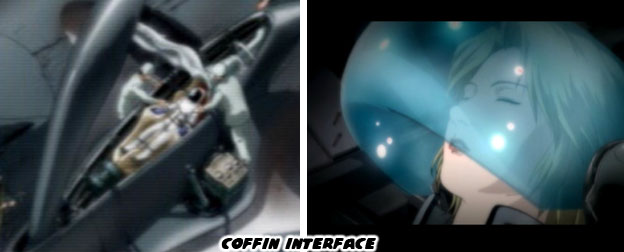
Perhaps the SYNC-I technology was the explanation for why the other Ridge Racer cars had become so easy to drift with. They were almost impossible to run into a wall when sliding. The computer-assisted driving technology was first proposed in a 1991 animé series called Cyber Formula. In that series artificial intelligence "Cyber Systems" helped turn racers into better drivers and also help reduce accidents by handling the more complex mechanics of aerodynamics and engine power a million times a second. Some corporations sought to exploit the technology into military applications. There was no doubt that the designers at Namco had pulled the influences from Cyber Formula into their own series. The SYNC-I system would become the predecessor of the Electro-Neuron-Synapse-Interface (ENSI). This system of connecting a neural interface with a vehicle was the basis for the COFFIN system used on the fighter jets in Ace Combat. The technology was being applied to aircraft at about the time the Kamata SYNCi debuted.
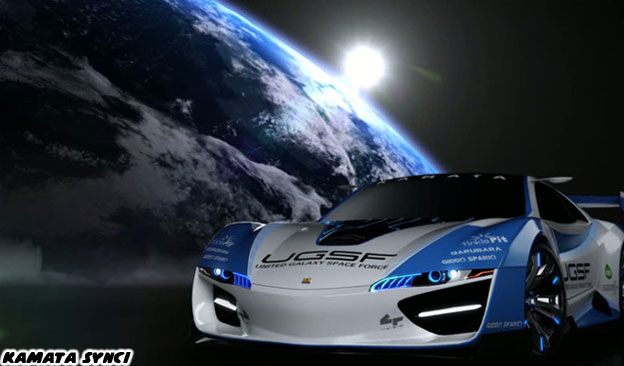
The developers at Namco made it known that from this point on the Ridge Racer universe would also have a hand in establishing UGSF canon. They featured the Kamata SYNCi in the cover art and promotional material for the game. It was a glorious looking car but became unmistakable because of the livery that the car was wrapped in. The UGSF banner was worn prominently on the ride. Previously only the companies that created aircraft for Ace Combat series were featured as sponsor stickers. The UGSF was formed during the events leading up to Ace Combat 3. By sponsoring a race car the organization was trying to earn the trust of the mainstream.
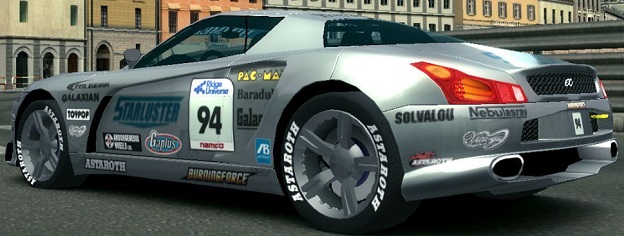
No other production car in Ridge Racer canon had merged technology and performance so closely together. No other car reflected the goals of the UGSF so well. The SYNCi was the poster child for the game and highlighted a new direction of the franchise. Audiences could not argue with what they saw but could argue with Namco for charging them to pay for DLC tracks and cars. To help push the intergalactic angle Namco introduced "The Planetary League" in Ridge Racer Vita. Players were put into one of four teams and sent daily "missions" by Namco. By completing missions and winning races players earned points to help the ranking of their respective teams. Gamers the world over would all be participating and helping out their teammates 24 hours a day. It was the type of racing challenge that a veteran gamer like myself could endorse.
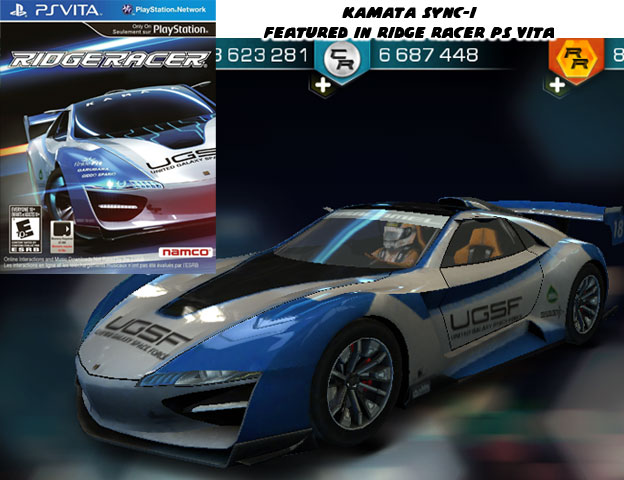
The Namco employees that worked on the golden era of arcade space shooters had put enough pieces in motion so that they could enjoy a self fulfilling prophecy. Well, at least canonically the UGSF would come to pass and the next 7000+ years of humanity would be written in the stars. For the records however there was still one piece of the puzzle that was missing. Ridge Racer laid the groundwork for the space jockeys but neither the Terrajin nor the SYNCi were the pinnacle race cars in the universe. Neither were the Kamata Angelus or Soldat Crinale for that matter! The company had already created the next evolutionary step in technology. These vehicles would connect Ridge Racer to Ace Combat and eventually the stars. I hope to see you back for the penultimate blog in my series.
As always if you would like to sponsor me
please visit my Patreon page and consider donating each month, even as little as $1 would help make better blogs and even podcasts!


















No comments:
Post a Comment